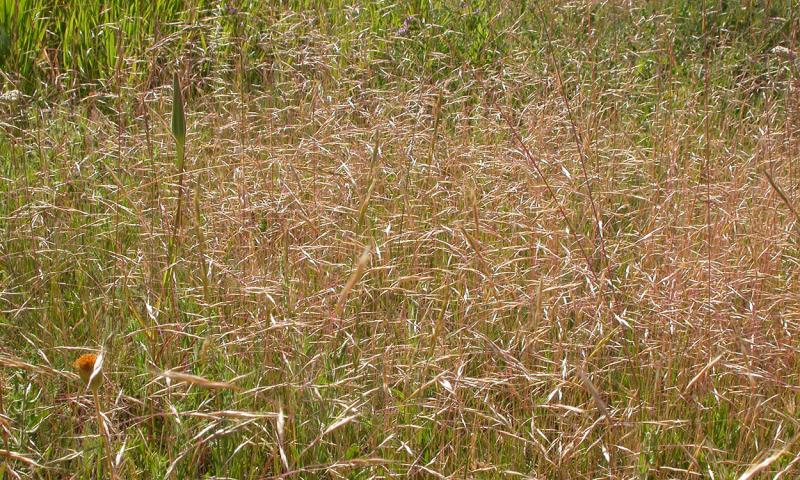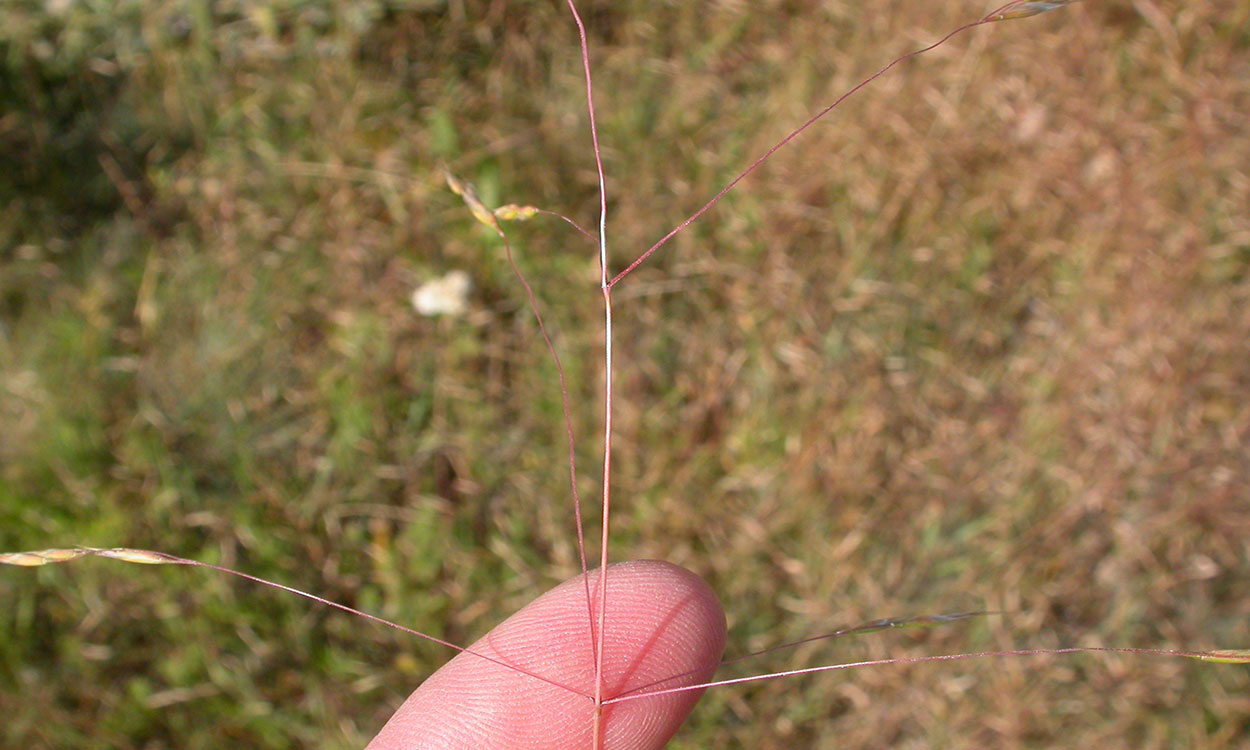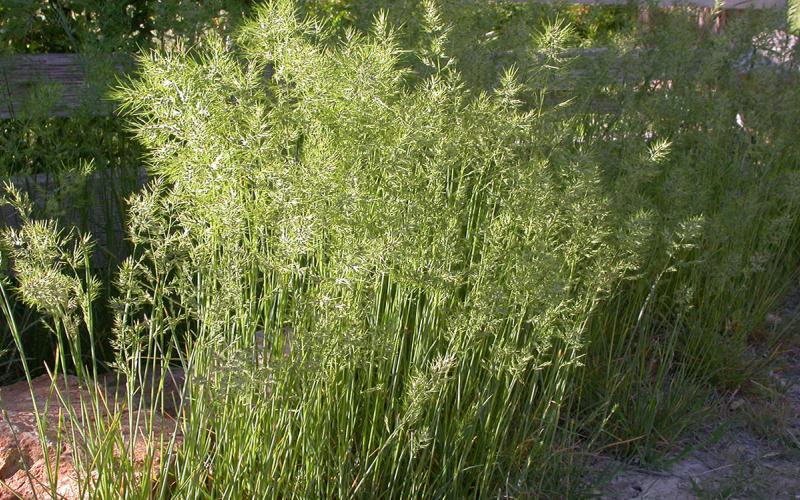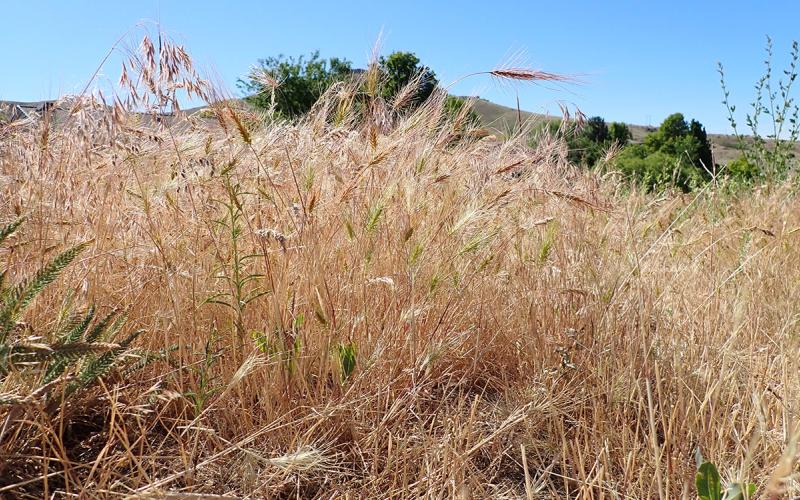Overview
There is a “new” invasive annual grass that should be first and foremost in the front of ranchers’ minds across South Dakota: ventenata (Ventenata dubia). Ventenata has gained notoriety in neighboring states, such as Montana and Wyoming, where both states have it listed on the state noxious weed list. As of the publication date of this article, it has not yet been listed in South Dakota.
Why is it a problem?
Ventenata is a threat to rangelands across the Midwest and west, because it can readily exclude desired native species (Figure 1). This is due largely to its life history. As a winter annual, it emerges in the fall, overwinters as a seedling, and resumes growth in the spring prior to the growth of desired native species, and then matures early in the grazing season. As a result, it can reduce forage available to livestock by 70%.

Not only does ventenata reduce forage availability, but it also differs nutritionally from native perennial grasses. Research from the University of Wyoming indicates that ventenata has lower total digestible nutrients (abbreviated as TDN) compared to native perennial grasses; it does keep a crude protein (abbreviated as CP) level that is similar to that found in perennial grasses. However, since ventenata matures earlier than perennial grasses, the nutrition declines faster. Furthermore, like another invasive winter annual grass, cheatgrass (Bromus tectorum), it can increase wildfire intensity and frequency, because it dries out so early in the season and acts as a fine fuel. Lastly, each ventenata plant produces 15 to 35 seeds; this translates to 2,800 to 3,700 seeds per a square-foot in dense stands!
Ventenata Identification
- 6 to 18 inches tall, up to 27 inches.
- Dark red or black nodes. These are visible at all growth stages.
- Long, membranous ligule
- Inflorescence (or, the flowering part) is an open panicle (Figure 2).
- Awns are bent and twisted (Figure 3). If you get the seeds wet, they will “twist.” They do this with precipitation to promote seed burial in the soil.
- Color: bright green (early spring), turning to shiny blonde at maturity (early summer). Note: This is unlike cheatgrass, which turns red at maturity.
- No visible hairs.
- Shallow and fibrous root. You can pull it easily out of the soil.
- Leaves are narrow; folded lengthwise.
- Field observations suggest that ventenata can grow in areas that receive 14 to 44 inches of annual precipitation, and at elevations from 33 to nearly 6,000 feet.


Management
If you notice ventenata on your operation, take note of where it is. Record the location, so you can keep track of it if it begins to spread. You should report its presence to your county weed board. Most ventenata seeds are not viable after 3 years; thus, repeated, direct management strategies can have an impact over time.
- Prevent Seed Spread
Avoid feeding contaminated hay that may come from high-risk areas, or utilize hay that is “certified weed free.” If you are doing a seeding project, use trusted seed sources to ensure that the seed is “clean” and free from contaminants, such as ventenata. If you do drive through an area that is heavily infested with ventenata, clean vehicles, ATVs, and other transports to avoid spreading seed elsewhere on your operation. - Herbicide Application
The University of Wyoming has had success using indaziflam for ventenata control. Other herbicides, such as imazapic and glyphosate, may also be used. Research from Oregon suggests that imazapic can control ventenata, but control was not sufficient to shift the plant community to desired native species. All research conducted to date indicates that multiple herbicide applications (repeated over years) are required to shift the plant community. - Grazing
Like other invasive annual grasses, such as cheatgrass and Japanese brome, repeated early, heavy grazing of ventenata prior to it maturing can negatively impact it over time, resulting in control.
Conclusion
When it comes to ventenata in South Dakota, it is probably not a matter of “if” invasion occurs, but “when.” In fact, ventenata has already been found in Harding County. The greatest way to control ventenata and prevent further spread is to be vigilant and continue to be on the lookout for it.
Additional Resources
- Ventenata. Montana Department of Agriculture.
- Ventenata - Ventenata dubia. Montana.gov.
- Ventenata and Other Coexisting Exotic Annual Grass Control and Plant. Rangeland Ecology & Management.
- Community Response to Increasing Imazapic Application Rates. Rangeland Ecology and Management.
- High Priority Invasive Species - Ventenata. Montana State University Extension.
- Resources. Institute for Managing Annual Grasses Invading Natural Ecosystems.

